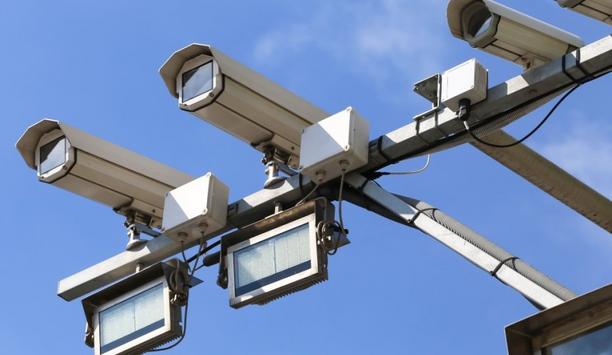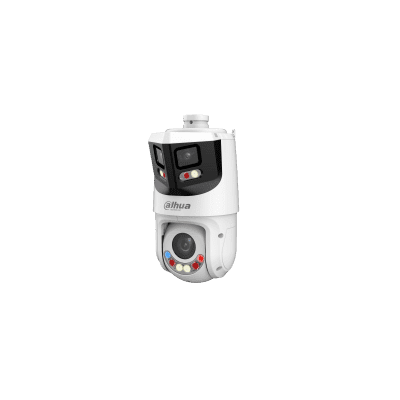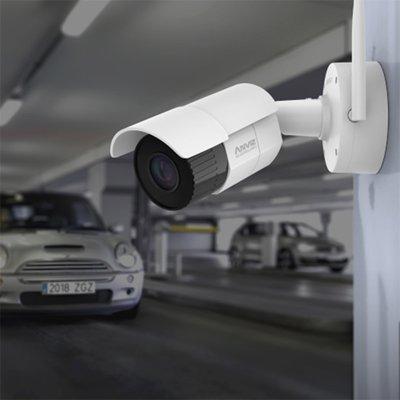 |
Intrusion detection devices must maintain a delicate balance. Highly sensitive devices can cause too many false alarms, while devices with insufficient sensitivity are easily defeated by sophisticated intruders. Innovations in intrusion detection technology have enabled significant advancements in performance, resulting in excellent catch performance while virtually eliminating false alarms. In this article, Tom Mechler, Product Marketing Manager for intrusion products for Bosch Security Systems in North America explains that well-designed intrusion detection devices have the capability to ignore non-intruder events such as pets and other animals, changes in room temperature or lighting conditions, moving shadows, moving electrical appliances and other harmless events. These detectors incorporate and analyse data from multiple sensors, including a long-range passive infrared (PIR) sensor, short-range PIR sensor, microwave sensor, white light sensor and temperature sensor.
The concept of gathering data from multiple sensors isn’t new. Many detectors combine data from various sensors, but simply building multiple sensors into a detector does not increase its effectiveness. Using multiple sensors as checks and balances may increase a detector’s false alarm immunity but does so at the cost of catch performance. The critical difference is in the way this data is processed.
Sensor data fusion collects information from all of the sensors and feeds it into a microprocessor that analyses the data using complex algorithms. This enables the detector to balance sensors and adjust sensitivities in order to make truly intelligent decisions to determine valid alarm conditions.
Sensor data fusion technology in intruder detectors at work
 |
| Since white light sensors prevent false alarms, burglars try to trick detectors with a flashlight |
Following are a few examples of how data fusion from sensors works in practice in a wide range of conditions that otherwise have high potential for triggering false alarms.
Car Headlights Sweep Across Detector
As a car pulls into the parking lot at night, the headlights sweep across the detector’s mounting location. Because the PIR sensors are sensitive to slight temperature changes, they detect the headlights at both short and long range. Of course, the white light sensor detects the headlights too.
The key to this scenario is the synchronisation of the data from the PIR sensors and the white light sensor. The heat and light change in tandem each time the headlights sweep across the detector. The microprocessor algorithm is aware of this synchronisation and determines that this is not a valid alarm condition. Consequently, security system does not raise a false alarm.
Burglar Tries to Trick Intruder Detector Using Flashlight
Aware of the white light sensor and its role in preventing false alarms, a burglar tries to trick the detector with a flashlight.
Because of the location of the burglar, he appears only on the long-range PIR sensor, not the short-range. And since the disturbance is detected at long range, the sensitivity of the microwave sensor is increased and its alarm threshold lowered. Most importantly, the microprocessor algorithm is aware that the data from the PIR sensor, the white light sensor and the microwave sensor is not synchronised and determines that this is a valid alarm condition.
Mouse Crosses Room 4.5 m from Detector
Conventional intrusion detection devices that degrade catch performance for false-alarm immunity or vice versa are being replaced by technology that eliminates the need to compromise between the two critical functions |
When a mouse is just 4.5 m from the detector, only the short-range PIR sensor reacts. A human intruder that close to the detector would reflect a large area to the microwave sensor, so when only the short-range PIR detects a signal, the microprocessor raises the microwave sensor’s threshold. The distance data provided by the two PIR sensors allows the microprocessor to vary the microwave sensor’s threshold. And because the mouse reflects a small area to the microwave sensor, the newly elevated threshold is not reached, and the security system does not go into alarm.
These are just a few examples showing how sensor data fusion technology can work. There are innumerable scenarios where it comes into play to catch real intruders, while minimising false alarms.
In addition to the sensor technology described above, there are other sensors that play an important role in intrusion detection. A description of these follows.
Pet immune detectors
Pet immune detectors use precise optics and specialised signal processing to distinguish between signals caused by humans and those caused by pets. This allows them to ignore signals caused by one or two pets up to approximately 45kg or signals caused by numerous rodents.
Temperature sensors
Some detectors with temperature sensors simply increase sensor gain as room temperature increases. This gain increase continues linearly as the room temperature exceeds the expected surface temperature of an intruder (33.3°C). Thus, the chance of false alarms climbs right along with the room temperature.
With advanced detectors, the sensor gain increases as expected, but only until the room temperature reaches 33.3°C. Using two PIR sensors with multiple high-quality lenses, the signal-to-noise ratio can be increased only within that narrow temperature band. Once the room temperature exceeds the surface temperature of an intruder, the sensor gain decreases again to minimise false alarms.
Anti-mask technology alarms when an intruder attempts to defeat the detector by masking it with infrared-blocking material, such as paper, tape, film or spray. Typically, an intruder employs these strategies during normal business hours when the security system is disarmed, then returns later with the knowledge that the motion detectors are compromised.
Multi-point anti-mask with integrated spray detection technology recognises masking attempts from black paper, aluminium and acrylic sheets, white polystyrene foam, clear self-adhesive vinyl, spray-on plastic skin, clear lacquer (brush applied), spray paint and more. This is accomplished with the following technologies:
Bounce-Back technology determines if the detector is covered or blocked by an object, such as a shoe box or a piece of paper. With bounce-back technology, the detector creates a bubble of infrared energy extending approximately 30 cm in front of the detector. This bubble radiates from the IR emitter. If the detector is blocked, an above-normal level of IR energy reflects back through the detector’s lenses. The detector uses multiple IR photodiodes to detect the extra IR energy levels, and then sends a trouble signal to the security system indicating that someone masked the detector.
Retro Reflector technology determines if someone attempts to compromise the detector with a sprayed-on material, such as paint. The detector’s LED light pipe contains the Retro Reflector’s advanced multi-prismatic structure. In normal conditions, the Retro Reflector structure reflects IR energy back into the detector where it is detected by a dedicated IR sensor. When the prismatic structure is coated with a spray material, the reflective properties of the prisms are negated, allowing the IR energy to pass through the prisms and out of the detector. A dedicated IR photodiode senses the reduced reflected IR energy level and then sends a trouble signal to the security system.
Through-the-Lens technology determines if a material is placed directly on the detector lens, such as tape or any other IR-opaque material. The detector emits IR energy back upon itself from two specialised prisms located at the bottom of the detector. If the lens is masked, a photodiode receives reduced IR energy levels. The detector then sends a trouble signal to the security system indicating that someone has masked the detector.
As you can see, there have been many innovations in intrusion detection technology over the last decade. Conventional intrusion detection devices that degrade catch performance for false-alarm immunity or vice versa are being replaced by technology that eliminates the need to compromise between the two critical functions.
Look closely at the technology in the detectors you use for your next project, so you can be sure you’re providing your customers with the best performance for their security systems. Not all detectors are the same.






















